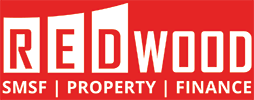Did you know that your SMSF balance can be used to borrow and invest in property?
SMSF borrowing rules were revised to allow borrowing through your SMSF to invest in property, we would like to share with you some of the benefits of borrowing to invest in property through your SMSF.
This article will focus on:
– Advantages
– How much can I borrow
– What lenders look for
– When is a SMSF allowed to borrow money?
– Are there any restrictions?
– How Redwood Advisory can help you
Advantages:
One of the advantages of SMSFs is that you can invest directly in residential property through your superannuation balance. The key benefits that can be realised by acquiring property in an SMSF are:
– Tax Benefits
Tax on SMSF earnings is capped at the same rate as other types of super fund (15%). This means the maximum tax payable on the property’s income is 15%. Any expenses such as interest, council rates, insurance and maintenance can be claimed as tax deductions by the SMSF.
– Capital gains tax is capped at 10% if a fund holds the property for more than 12 months and potentially no CGT bill will apply at all if the property is sold after you retire and your SMSF is in ‘pension phase’.
- Possible Nil Tax
If property in an SMSF is held until after you retire and your super goes into pension phase, no tax is payable on either the capital gains if you sell or the rental income if you continue to hold the property - Security over Superannuation Assets
The mortgage lender has no access to any other assets held in your SMSF other than the property – therefore reduces the exposure to risk for other assets held within the SMSF - Access to a Loan Deposit
Many Australians are unable to enter the investment property market because they do not have a sufficient deposit or equity. Investors can use their Superannuation balance to pay for the deposit on the property in order to easily cover the deposit.
How much can I borrow?
Lending policies between banks vary however generally for standard SMSF Property loans for residential property, loans are allowed up to 80% of the property value. Certain banks impose a minimum SMSF balance for the loan i.e. minimum superannuation balance of $100,000.
For commercial property, most banks allow up to 70% of the property value for non-specialised securities.
What lenders look for?
The process for applying for a loan is similar to applying for an individual loan and the main hurdle encountered by most SMSF applicants is proving that there is sufficient income in the trust to support the loan.
Typically, the banks will look at the current income of the trust based on its previous two years tax returns and will then assess if that income plus the proposed rental income will be sufficient to service the debt. If the SMSF has not been operating for two years, most lenders can also use the income of members / beneficiaries of the SMSF to support the application if a personal guarantee is provided.
When is a SMSF allowed to borrow money?
There are laws restricting the use of SMSFs to borrow money, and restricting the recourse of the lender in the event that the trust cannot meet its repayment obligations.
A basic outline of the rules a trust must follow in order to borrow money, is as follows:
- The asset is an asset the SMSF could otherwise legally acquire (if it had the funds).
- The asset is held on trust for the SMSF using a Security Trust or Bare Trust (known as a Security Custodian).
- The SMSF acquires a beneficial interest in the asset from the outset.
- The SMSF can transfer the property from the Security Trustee upon making all loan repayments.
- The lender must only have limited recourse against one particular asset. This means that in the event of a loan default, the lender must not be able to claim any other assets of the SMSF, only the Security Trustee.
- Each borrowing arrangement can only be for a “single acquirable asset”. In the case of strata title or subdivisions, each title is considered a separate asset.
Are there any restrictions?
There are restrictions on SMSF loans which prevent some transactions from taking place. For example:
- Construction loans may not be available. However the SMSF can pay for renovations out of its own funds, but cannot use the borrowed additional funds for this purpose.
- Refinances of existing SMSF loans may not be available (one of our lenders now offers refinances).
- Buying a property in your SMSF that you intend to live in (owner occupied business premises are acceptable).
- Selling a residential property to your SMSF, that you or a related party owns (commercial property is acceptable).
You may also wish to speak to your accountant or financial planner to find out if your intended transaction complies with lender rules and government regulations.






